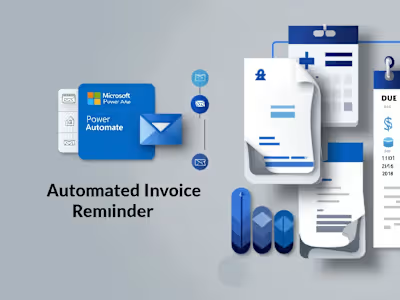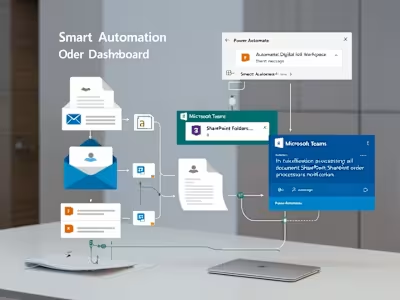Employee Sentiment Analysis Hub
Employee Sentiment Analysis Hub 🚀
This repository documents a no-code project that leverages Microsoft’s ecosystem to capture employee feedback, analyze sentiment using Azure Cognitive Services, and display insights via a Power BI dashboard. 💡
Table of Contents 📑
Project Overview
Prerequisites
Step 1: Set Up SharePoint List
Step 2: Build a No-Code Form with Power Apps
Step 3: Automate Sentiment Analysis with Power Automate
3.1: Create the Flow
3.2: Integrate Azure Cognitive Services (Sentiment V4)
3.3: Update the SharePoint Item with Results
Step 4: Develop a Visual Dashboard with Power BI
Testing
Next Steps and Enhancements
Project Overview 🌟
The Employee Sentiment Analysis Hub is a no-code solution that:
Provides a No-Code Form using Power Apps for users to submit their feedback.
Stores Employee Feedback in a SharePoint list.
Automates Sentiment Analysis using Power Automate combined with Azure Cognitive Services (Sentiment V4).
Visualizes Insights through interactive Power BI dashboards.
This project allows organizations to monitor employee sentiment and gather actionable insights. 📊
Prerequisites ✅
A Microsoft 365 account with access to SharePoint, Power Apps, Power Automate, and Power BI.
An Azure Cognitive Services resource with access to the Language service (for Sentiment Analysis).
Basic familiarity with using the Microsoft Power Platform.
Step 1: Set Up SharePoint List 📝
Create the "Employee Feedback" List
List Name: Employee Feedback
Create/Configure the following columns:
Column Name Type Description Employee Name Single line of text Capture the name of the employee giving feedback. Feedback Text Multiple lines of text The content of the feedback. Submission Date Date and Time The date/time when the feedback is submitted. (Optional) Positive Sentiment Score Number To be updated with the sentiment analysis (confidenceScores/positive). Negative Sentiment Score Number To be updated with the sentiment analysis (confidenceScores/negative). Neutral Sentiment Score Number To be updated with the sentiment analysis (confidenceScores/neutral). Key Phrases Multiple lines of text To be populated with key phrases extracted from the feedback.
Tip: Although SharePoint automatically tracks metadata like "Created" and "Created By," having dedicated fields ensures consistency when integrating with Power Automate and Power BI. 👍
Step 2: Build a No-Code Form with Power Apps 📱
Access Power Apps:
Go to Power Apps and sign in with your Microsoft 365 credentials.
Create a new Canvas app from blank (choose Phone or Tablet layout as needed).
Connect the Data Source:
Design the Feedback Form:
Exclude the Sentiment Score and Key Phrases fields because they will be updated automatically.
Add and Configure the Submit Button:
Test and Publish:
Submit test entries and verify they appear in SharePoint.
Save and publish the app. You may also embed it in your SharePoint site using the Power Apps web part.
Step 3: Automate Sentiment Analysis with Power Automate 🔄
3.1: Create the Flow
Access Power Automate:
Go to Power Automate and sign in.
Create an Automated Cloud Flow:
Configure the Trigger:
3.2: Integrate Azure Cognitive Services (Sentiment V4)
Add the Sentiment Analysis Action:
Configure the Connection:
Map the Input:
Map the text input using the dynamic content of Feedback Text from your SharePoint trigger.
3.3: Update the SharePoint Item with Results
Add the "Update item" Action:
Configure the Update:
Site Address: Use the same SharePoint site as before.
List Name: Select Employee Feedback.
Id: Use the dynamic content ID from the trigger.
Sentiment Score: Map this to
confidenceScores/positive from the Sentiment (V4) action.Key Phrases: Map this to the key phrases output.
Save and Test the Flow:
Save your flow.
Test by submitting a new feedback entry via your Power Apps form.
Verify in your SharePoint list that the Sentiment Score and Key Phrases fields are updated correctly.
Step 4: Develop a Visual Dashboard with Power BI 📈
Open Power BI Desktop:
Connect to SharePoint Data:
Build and Customize Visualizations:
Publish the Report:
Testing 🧪
Positive Test:
Use a sample feedback like:
"I had an excellent experience with the new system update. The interface is intuitive and responsive, making my daily tasks much easier." 😊
Mixed Test:
Use a sample feedback like:
"The new system design is user-friendly and modern, but some features are unresponsive and error messages appear frequently." 😐
Submit these test entries through your Power Apps form and verify that:
The Power Automate flow triggers correctly.
The SharePoint list gets updated with the corresponding sentiment scores and key phrases.
Your Power BI dashboard refreshes to reflect the new data.
Next Steps and Enhancements 🚀
Employee Recognition:
In future iterations, consider adding an Employee Recognition list and corresponding app if the project’s scope expands.
Additional Metrics:
You can expand the Power Automate flow to store details like neutral and negative sentiment scores in separate columns for more nuanced analysis.
User Feedback:
Before finalizing, gather user feedback to further refine the forms, flows, and dashboard visuals.
Advanced Analytics:
Experiment with more features from Azure Cognitive Services or Power BI to further enhance insights.
This project offers a scalable, no-code solution to monitor employee sentiment and derive actionable insights. Enjoy building and iterating on your Employee Sentiment Analysis Hub! 🎉
Like this project
Posted Apr 22, 2025
Created a no-code employee sentiment analysis hub using Microsoft tools.






